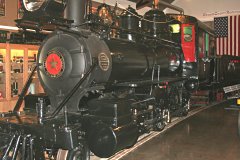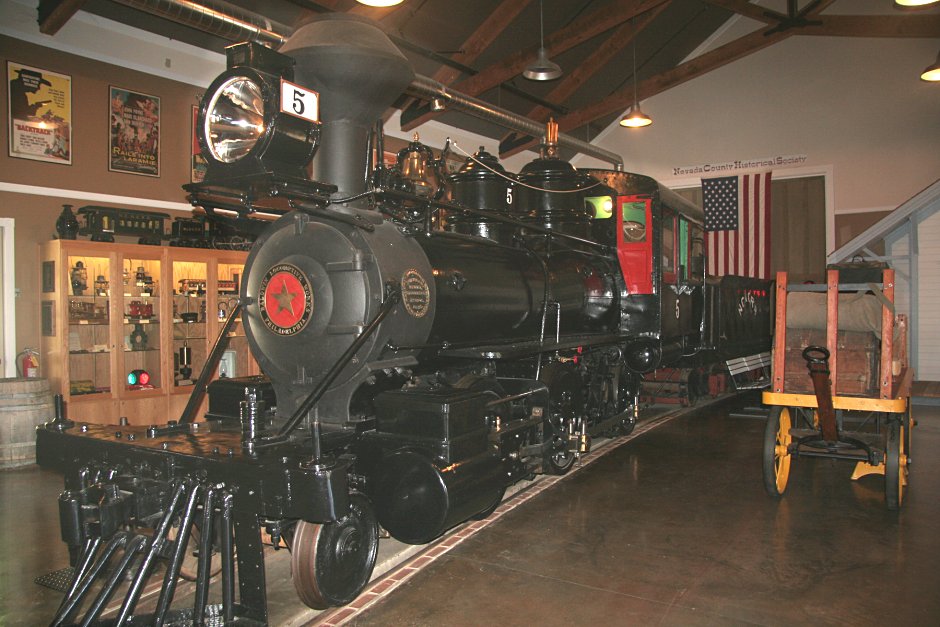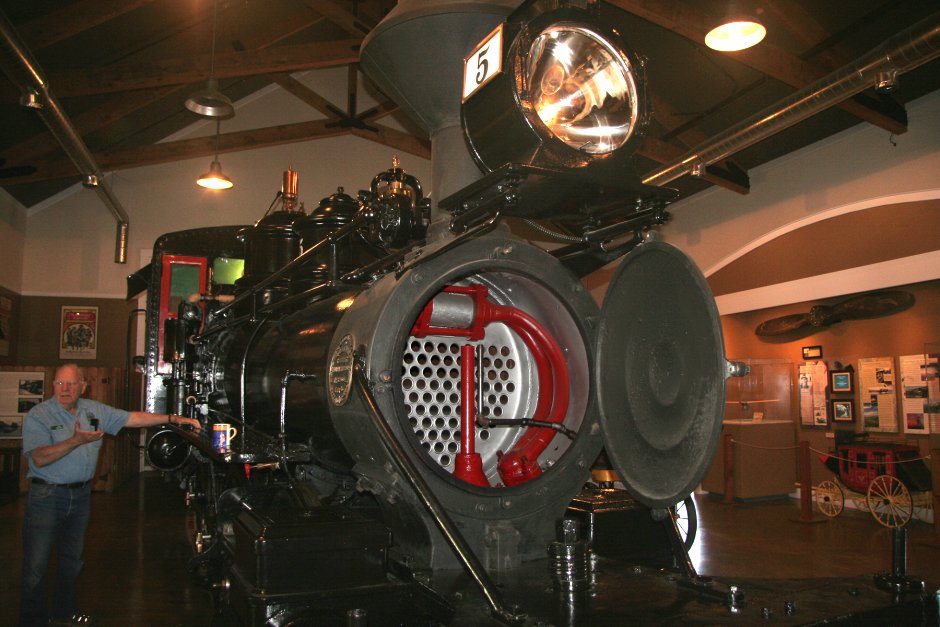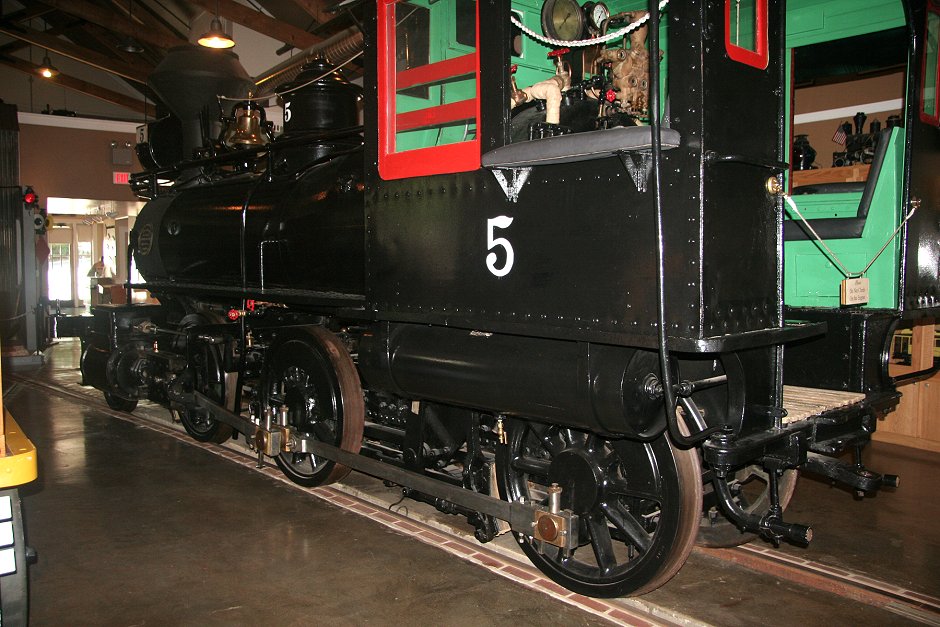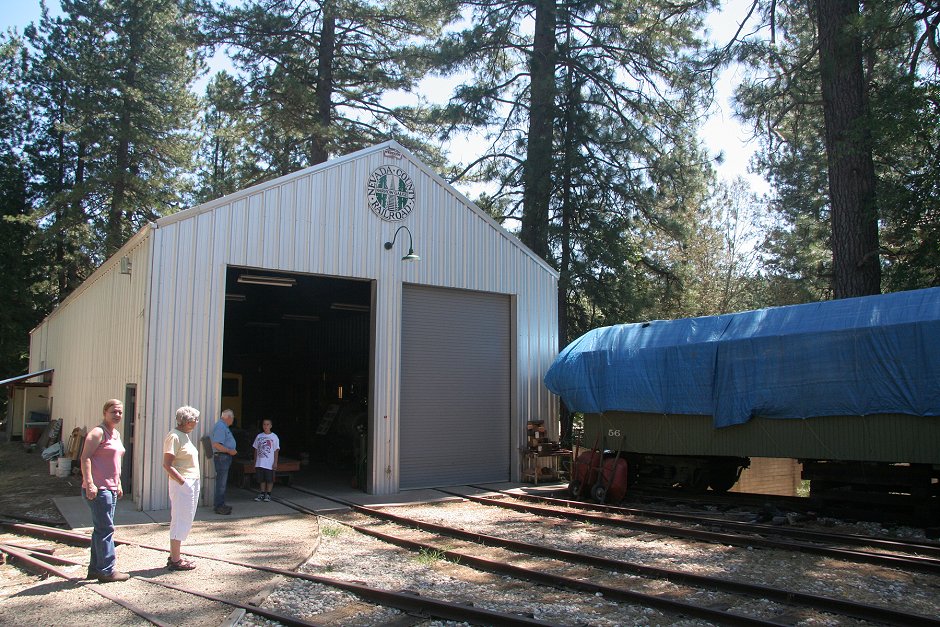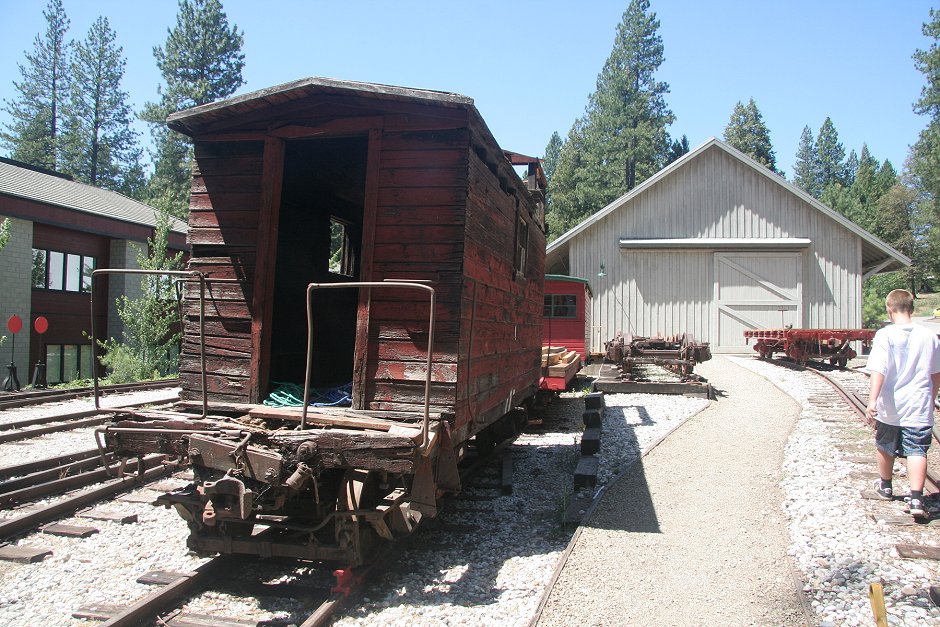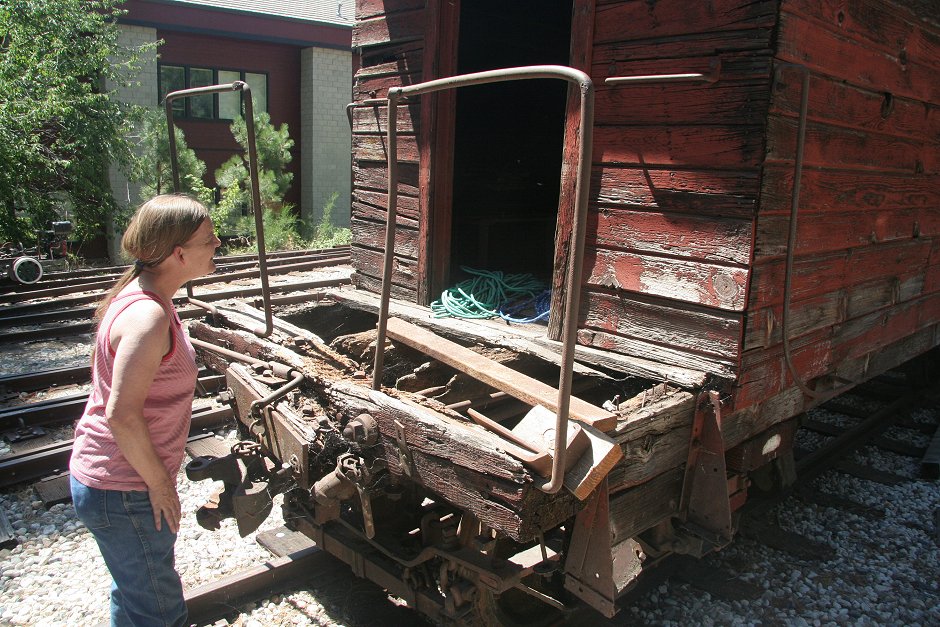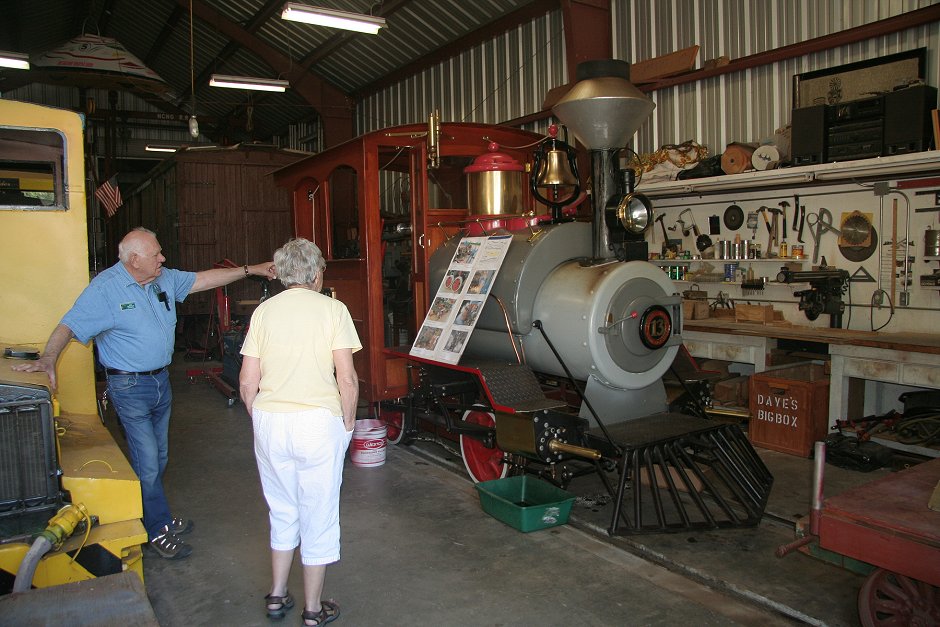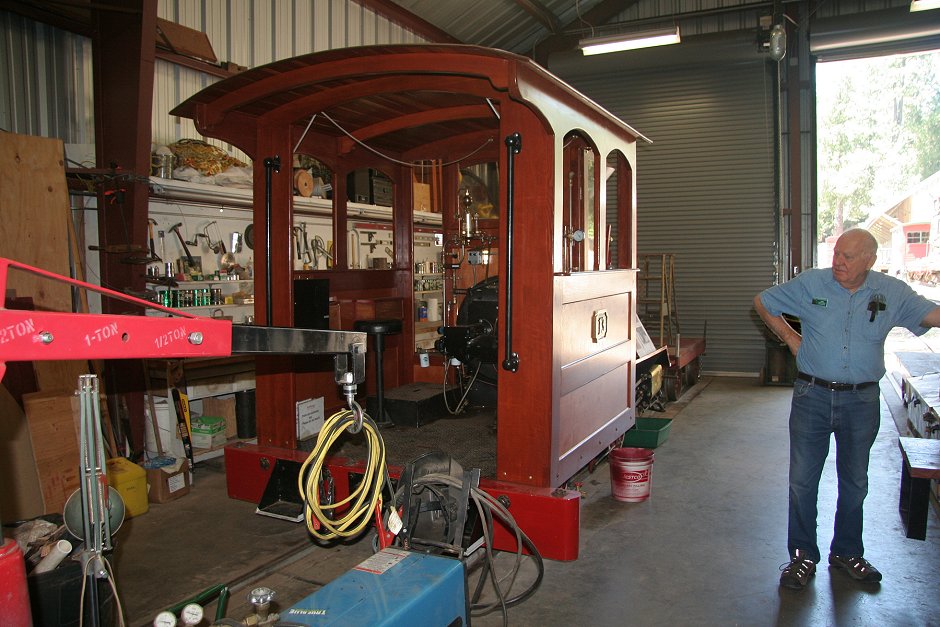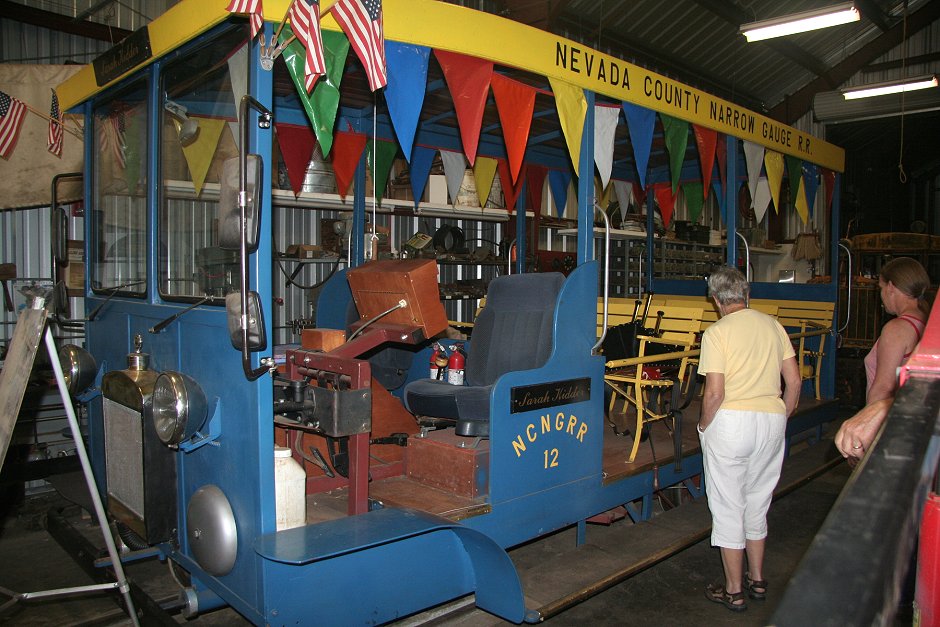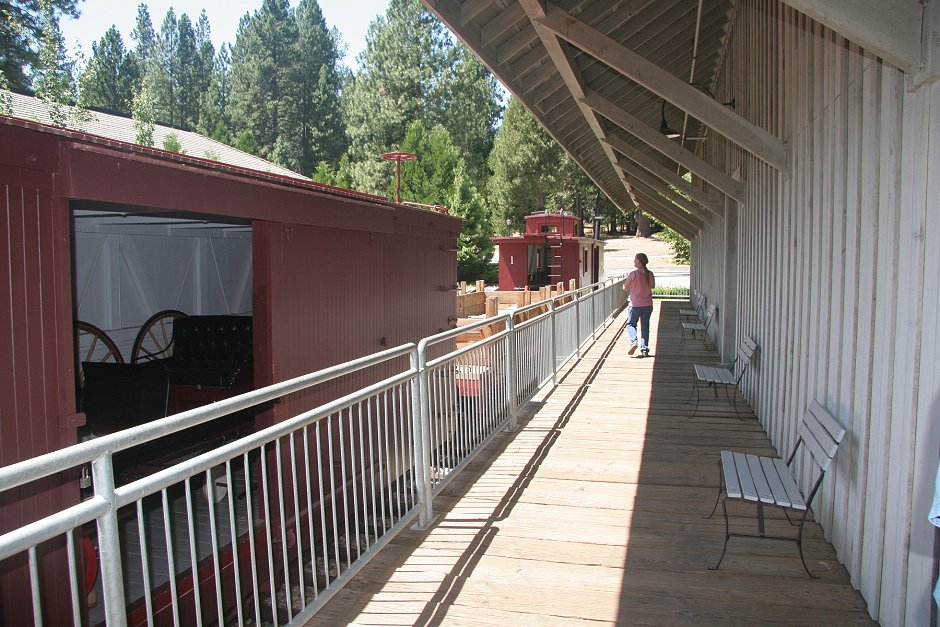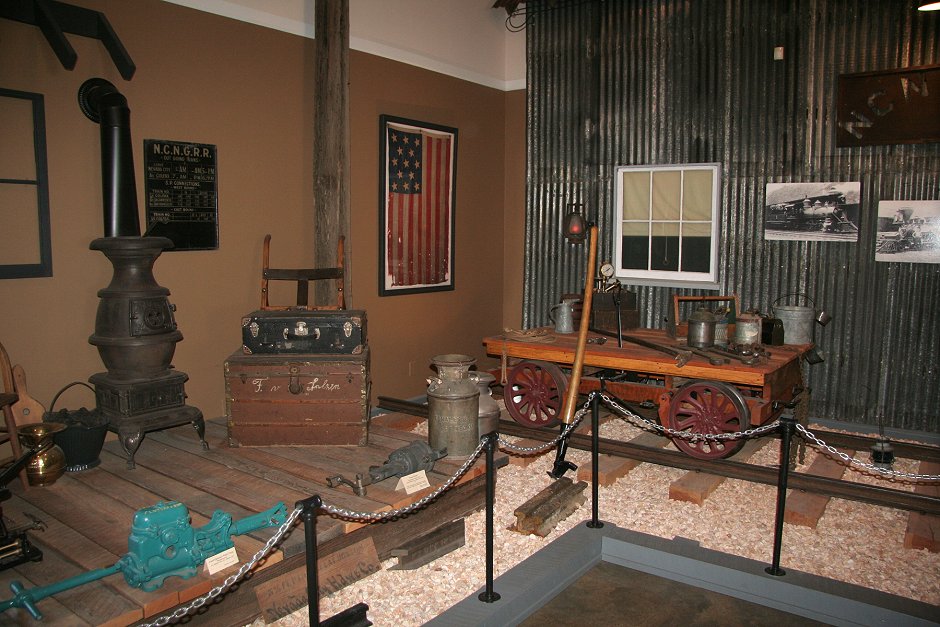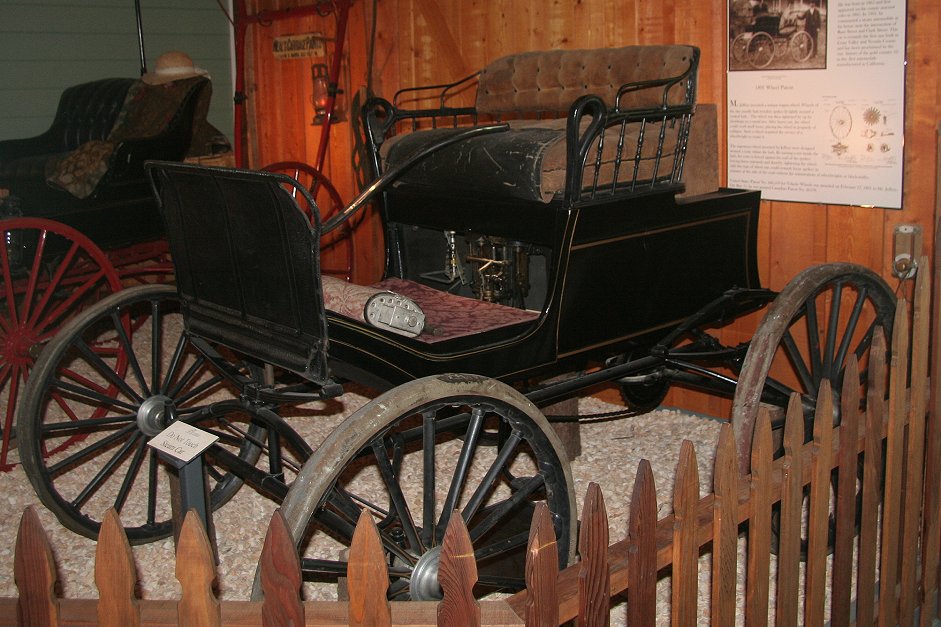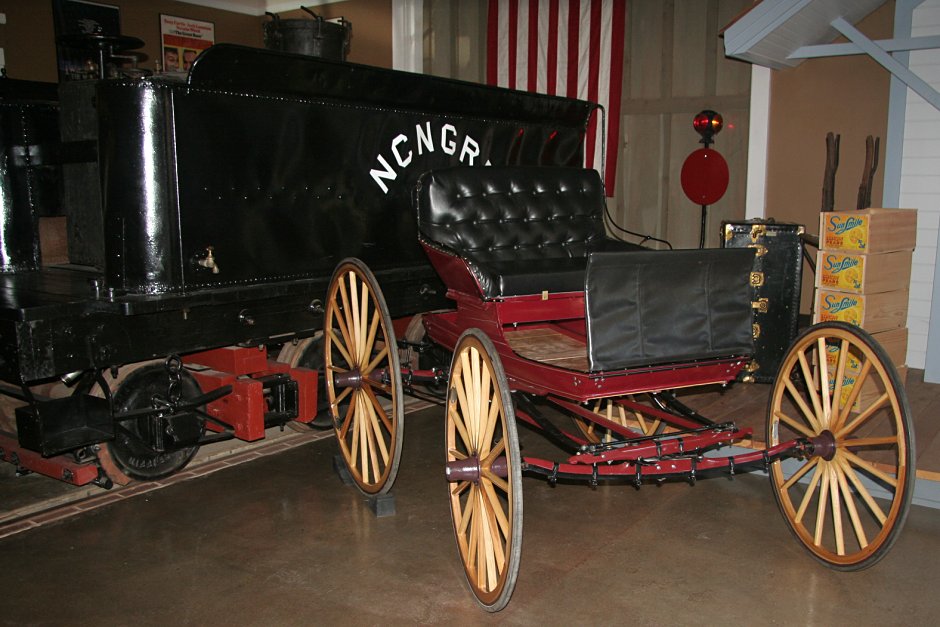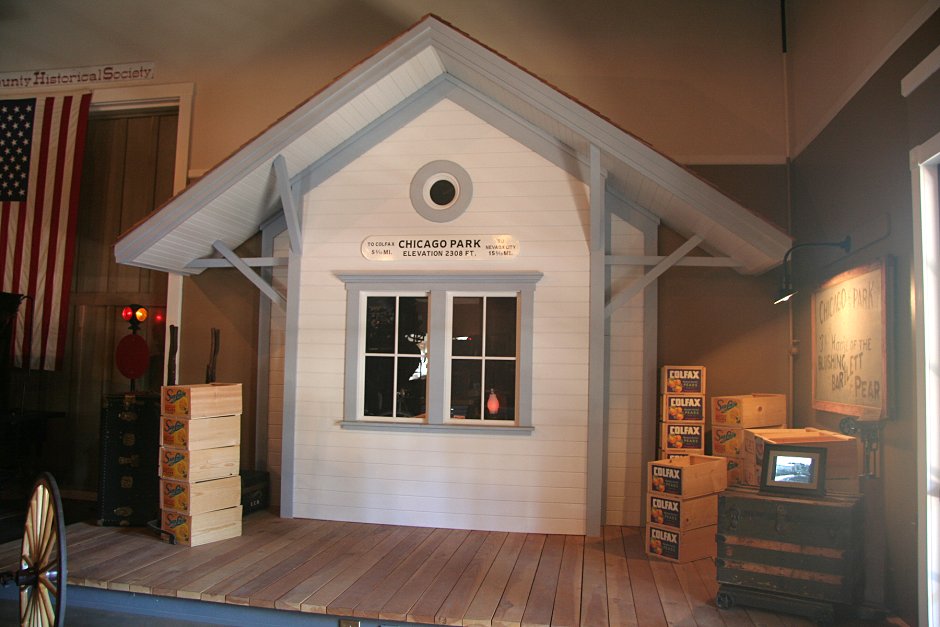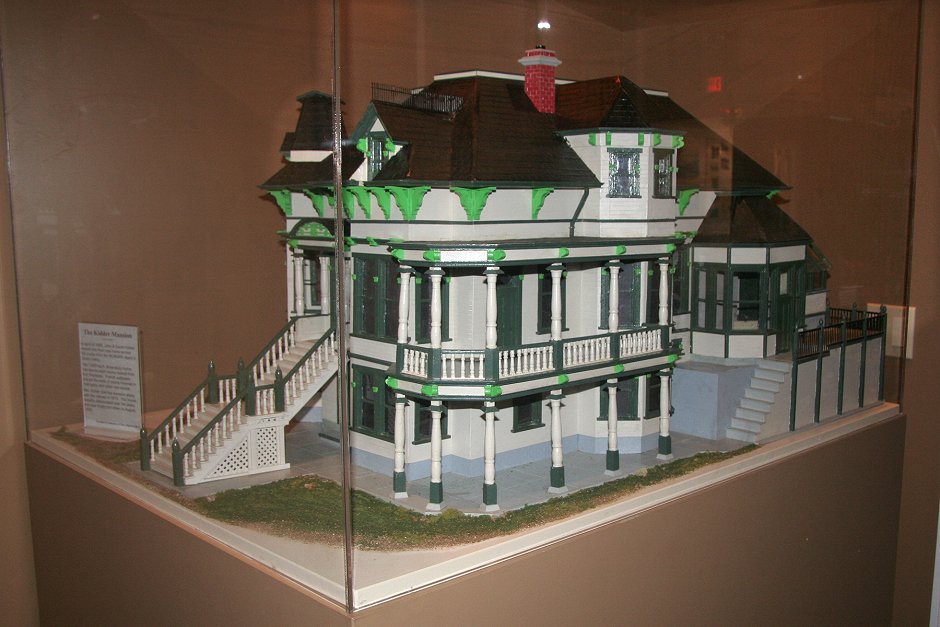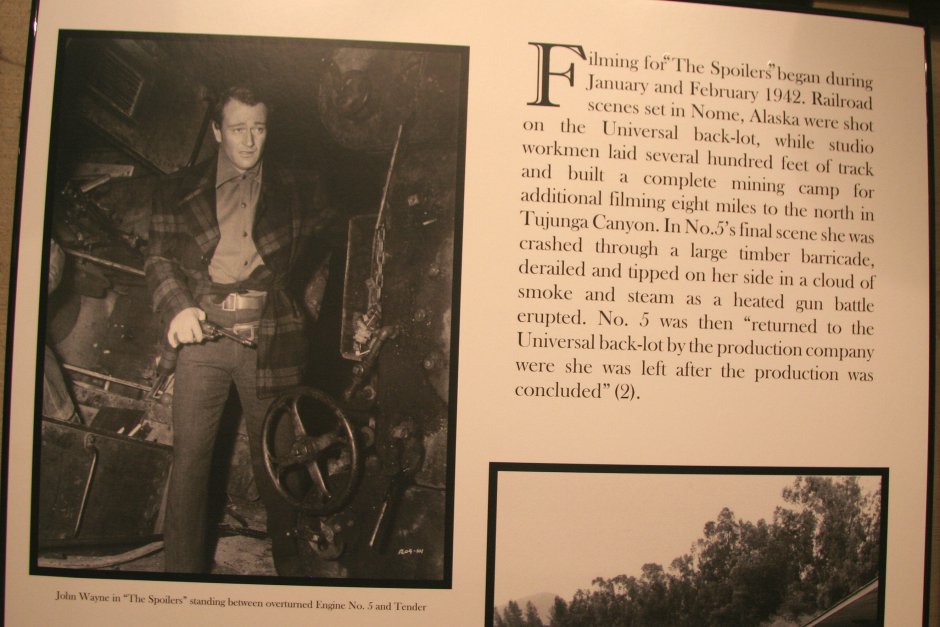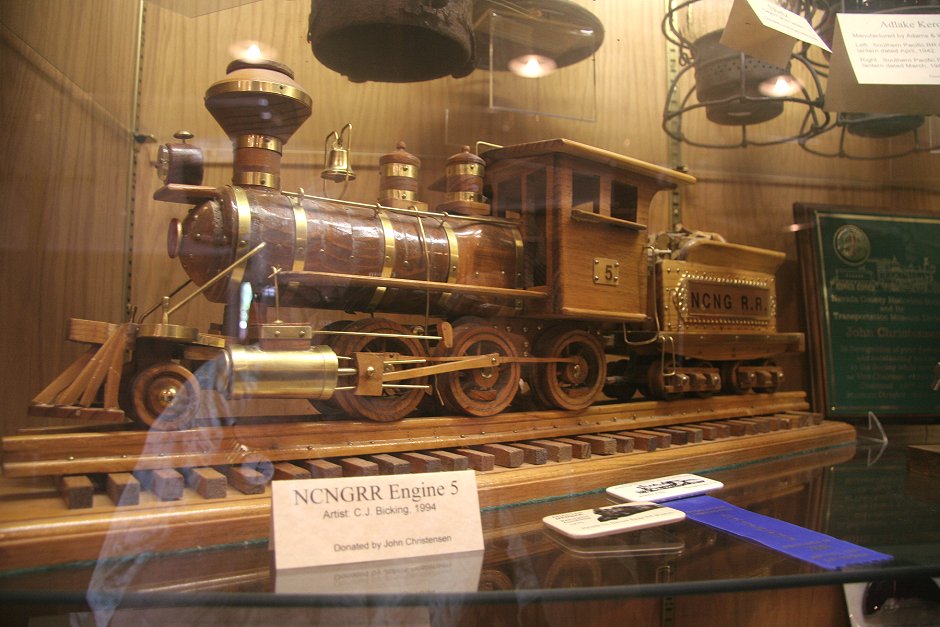| When Mary and I arrived at the museum
only the souvenir sales person and two other volunteers (Don Tallitsch
and Al Dittmann) were in the building. Don offered to give us a private
tour and we accepted immediately. The information in the captions below
is from Don and several visits to the excellent museum website given
above. Not given in the driving directions at their website is that the
turns onto Hollow Way, Bost, and Kidder Court are each well marked by
black on yellow RR signs and arrows to the museum. There are no street
signs (rustic Nevada City!).
This is a splendid museum not far from the center of Nevada City, just off the Gold Flat exit from the 20/49 Freeway. See their website, link above, for directions and note that each turn has black-on-yellow railroad signs with arrows pointing the way. You can view a narrated video slide show in addition to the captioned pictures on this page by clicking on the thumbnail below.
|
